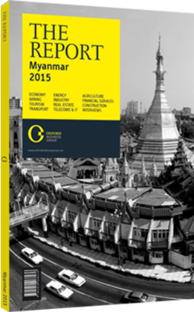Hidetoshi Nishimura, Executive Director, Economic Research Institute for ASEAN and East Asia (ERIA): Interview

Interview: Hidetoshi Nishimura
What priorities have been identified by the Myanmar Comprehensive Development Vision (MCDV)?
HIDETOSHI NISHIMURA: The MCDV was formulated by ERIA under the guidance of the Ministry of National Planning and Economic Development (NPED), in close cooperation with other ministries. It provided a set of growth strategies for Myanmar’s National Comprehensive Development Plan for the 2011-30 period, which is currently being drafted by the NPED. The MCDV envisages people-centred development that is growing, globally linked, socially inclusive and environmentally sustainable. Proposed strategies for growth include the “Agriculture Plus Plus” initiative, as well as export-oriented, foreign direct investment-driven and “two polar” growth strategies. The formulation of the MCDV provided a good occasion for active interaction among government officials from various ministries, private sector players, academics, international experts and ERIA to establish the vision for the country and determine where it stands and which direction it is heading to.
What role can small and medium-sized enterprises (SMEs) play in ASEAN’s integration?
NISHIMURA: SMEs are an important driver for job creation and economic growth in the ASEAN region, and as the ASEAN Economic Community moves towards a higher level of market integration, new opportunities are opening for SMEs, particularly important as 88-99% of all firms in ASEAN member states are SMEs. A more dynamic ASEAN will require better-integrated industrial districts in member states that are anchored on tighter linkages between SMEs and large enterprises in and between ASEAN and the rest of the world.
Given the importance of SMEs to the economic integration of ASEAN, further regulatory and institutional support for SMEs is necessary. The ASEAN SME Policy Index, a product of the joint efforts of ERIA, the OECD and the ASEAN SME Working Group, exemplifies this as it indicates the five policy dimensions where the most significant gaps appear, namely: technological transfer; access to finance; access to support services; the promotion of entrepreneurial education; and faster start-ups with better regulations. All the ASEAN member states have affirmed their willingness to move forward towards a more supportive policy and institutional environment for SMEs in the region.
What is your outlook for public-private partnerships (PPPs) for infrastructure development?
NISHIMURA: Myanmar’s aspiration for higher and more balanced growth, as well as further global investment, cannot be achieved without first developing its public infrastructure. However, it must find a way to implement infrastructure projects within a limited fiscal space and with a less experienced domestic private sector. PPPs, as a long-term collaborative engagement between the government and private parties – both domestic and international – in undertaking projects, may provide the answer.
The challenge for Myanmar, however, lies in building sufficient institutional capacity for its private sector. Indeed, the country still does not have regulations or a set of regulations that is specific to PPPs. Moreover, related regulations such as the Foreign Investment Law or sectoral regulations are still in the initial stage. This lack of institutions or regulations to govern PPPs is also a significant obstacle for other ASEAN member states. As a result, the PPP Guidelines for South-east Asia, developed by ERIA in cooperation with the ASEAN Connectivity Coordinating Committee and the ASEAN Secretariat, will serve as an important reference point in establishing a PPP framework in Myanmar and other member states. As ASEAN chair in 2014, Myanmar has had an opportunity to address PPP issues, particularly on the need for the public sector to maximise the use of private sector resources in infrastructure development.
You have reached the limit of premium articles you can view for free.
Choose from the options below to purchase print or digital editions of our Reports. You can also purchase a website subscription giving you unlimited access to all of our Reports online for 12 months.
If you have already purchased this Report or have a website subscription, please login to continue.

